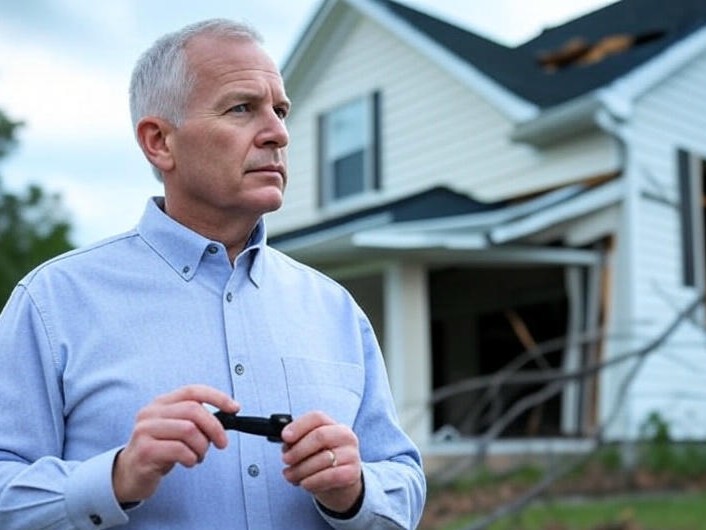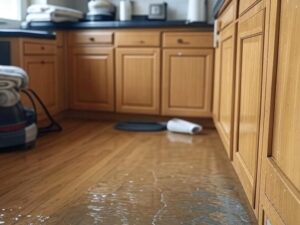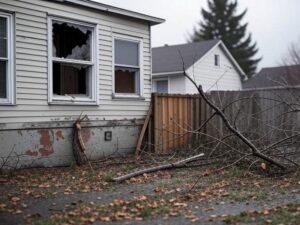Avoid These Pitfalls to Get Full Compensation
Storms can hit hard, leaving your home in chaos. A tree crashes through your roof. Floodwater ruins your floors. Wind rips off your siding. You know you need to file a storm damage claim, but the process feels overwhelming. As a public adjuster, I’ve seen homeowners make simple mistakes that cost them thousands in compensation. My goal is to help you avoid those pitfalls. In this article, I’ll walk you through the most common storm damage claim mistakes, explain home insurance basics, and share tips to maximize your payout. Let’s dive in.
Understanding Your Home Insurance Policy
Before filing a storm damage claim, know what your home insurance covers. Most standard policies cover damage from storms, like wind, hail, and lightning. They often include coverage for:
- Dwelling: Repairs to your home’s structure, like walls or the roof.
- Personal Property: Replacement of damaged items, like furniture or electronics.
- Additional Living Expenses: Costs for temporary housing if your home is uninhabitable.
However, policies vary. Some exclude flood damage, requiring separate flood insurance. Others have high deductibles for wind or hail. Always read your policy or call your insurer to confirm coverage. Not knowing your policy is a big storm damage claim mistake. It can lead to surprises, like uncovered damages or unexpected costs.
Mistake 1: Waiting Too Long to File Your Claim
Time matters after a storm. Many homeowners delay filing because they’re busy cleaning up or think the damage isn’t “bad enough.” This is a costly error. Most insurance policies require you to report damage promptly, often within 30 to 60 days. Waiting too long can lead to a denied claim.
For example, imagine a storm tears shingles off your roof. You wait three months to file because the leaks seem minor. By then, water has caused mold and structural damage. Your insurer might argue you failed to report promptly, rejecting your claim. To avoid this, contact your insurer as soon as you notice damage. Even small issues can worsen over time.
Tips to File Promptly:
- Call your insurer within 24-48 hours of the storm.
- Take photos of the damage before cleaning up.
- Keep a record of all communication with your insurer.
Mistake 2: Not Documenting Damage Thoroughly
Documentation is your best friend when filing a storm damage claim. Many homeowners make the mistake of providing vague or incomplete evidence. This can lead to lowballed offers or outright denials. Insurers need clear proof of damage to process your claim.
Picture this: A hailstorm dents your siding and breaks windows. You tell your insurer about it but only send a few blurry photos. Without detailed evidence, they might underestimate the repair costs. Instead, document everything carefully.
How to Document Damage:
- Take clear, high-quality photos (wide and close-up) and videos of all affected areas.
- Make a list of damaged items, including their age and value.
- Save receipts for temporary repairs, like tarps or boarding up windows.
According to the Institute of Inspection, Cleaning and Restoration Certification (IICRC), thorough documentation is critical for water and storm damage claims. Their standards emphasize detailed records to ensure fair assessments. Strong documentation strengthens your case and helps a public adjuster fight for your full payout.
Mistake 3: Accepting the First Settlement Offer
Insurance companies often send an adjuster to assess your damage. Their job is to estimate repair costs. But their first settlement offer is often lower than what you deserve. Accepting it without question is a common storm damage claim mistake.
For instance, suppose a windstorm damages your roof and interior walls. The insurer’s adjuster offers $10,000, claiming it covers everything. You accept, only to learn later that repairs cost $15,000. A public adjuster can review the offer and negotiate for a fair amount. I’ve seen cases where homeowners doubled their payouts by challenging low offers.
Don’t feel pressured to accept the first check. Take time to review the estimate and compare it to contractor quotes. If it seems low, hire a public adjuster to advocate for you.
Mistake 4: Making Temporary Repairs Without Approval
After a storm, you want to protect your home. You might board up windows or tarp a leaky roof. These temporary repairs are smart, but doing them without insurer approval can backfire. Some policies require you to get permission before spending money on repairs.
Imagine you hire a contractor to tarp your roof for $500. You don’t tell your insurer, assuming they’ll reimburse you. Later, they deny the expense because you didn’t follow their process. To avoid this, call your insurer before making repairs. Ask what’s covered and keep receipts for any approved expenses.
Steps for Temporary Repairs:
- Contact your insurer to report the damage.
- Ask for approval before starting repairs.
- Hire reputable contractors and save all invoices.
Mistake 5: Not Hiring a Public Adjuster
One of the biggest storm damage claim mistakes is going it alone. Insurance claims are complex. Policies are full of fine print. Adjusters work for the insurer, not you. A public adjuster levels the playing field. I work for you, not the insurance company. My job is to maximize your claim and handle the paperwork.
For example, a homeowner might file a claim for a flooded basement. The insurer offers $5,000, citing “limited coverage.” A public adjuster reviews the policy, finds overlooked coverage, and negotiates a $20,000 payout. Studies, like one from the University of Central Florida (2021), show public adjusters often secure higher settlements than homeowners alone.
Don’t assume you can’t afford a public adjuster. Most work on a contingency fee, taking a percentage of your settlement. This means no upfront costs for you. Hiring me ensures your claim is handled right, saving you time and stress.
How to Avoid These Mistakes
Filing a storm damage claim doesn’t have to be a headache. By avoiding these pitfalls, you can get the compensation you deserve. Here’s a quick recap:
- File promptly: Don’t wait to report damage.
- Document thoroughly: Take photos, videos, and notes.
- Review offers carefully: Don’t accept lowball settlements.
- Get approval for repairs: Check with your insurer first.
- Hire a public adjuster: Let an expert handle your claim.
These steps make the process smoother and increase your chances of a fair payout. Storms are stressful enough. Don’t let claim mistakes add to your worries.
Why Choose The PA You Know?
Navigating a storm damage claim can feel like a battle. That’s where I come in. I’m dedicated to helping homeowners like you get every penny you’re owed. I know the tricks insurers use to underpay claims. I also know how to fight back. My experience as a public adjuster means you don’t have to face the insurance company alone.
Ready to file a storm damage claim? Don’t risk making costly mistakes. Request a free claim review. I’ll evaluate your damage, review your policy, and guide you through the process. Visit our website at The PA You Know to get started. Let me help you secure the payout you deserve.






